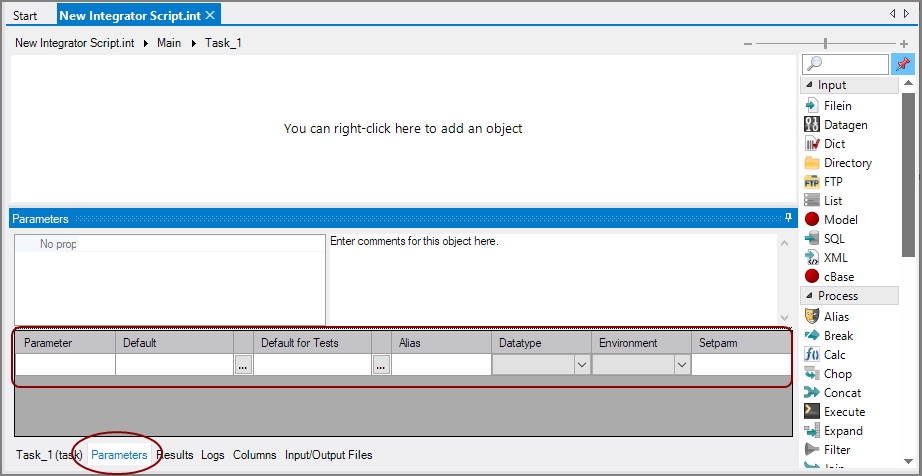You define parameters using the Parameters link at the bottom of the VI Tab. You can click the Parameters link at any point in the development or editing of your VI script.
A context menu is available in the Parameters section to help you manage the entries.

Parameter Attributes
| Attribute | Description |
|---|---|
| Parameter (required) |
Names of the parameter being declared. Parameter names should not contain spaces or other special characters other than the underscore. Parameter names are case-insensitive. However, on UNIX systems, parameters that inherit values from environment variables must match the environment variables in a case-sensitive manner. A good practice is to use lowercase letters with underscores. Once a parameter has been defined, it can be used by other objects in a script by including the parameter name in a parameter string in the appropriate location in the script. |
| Default | Identifies the default value of the parameter. If a parameter is not defined, either through arguments or an environment variable, this value is used as the parameter value. If default is not used, the default value is as follows:
|
| Default for Tests | Sets a default value for when the script is tested. |
| Alias | If present, this attribute defines a new name that is used when the parameter is referred to within the script itself. The parameter name is still used to define parameter values, on the command-line, through the environment, or passed as arguments to Tunnel objects. The alias is used within the script itself, for parameter substitution. This feature is useful in Tunnel situations where Dimension names are passed as parameters, but these Dimension names contain special characters like spaces. The dimension name can be aliased to a name that meets the rules of a parameter name (alphanumeric, beginning with a letter). |
| Datatype | Defines the parameter type. Valid values include: "string" "int" "double" "boolean" "array"
|
| Environment |
Defines whether the parameter can inherit its value from an environment variable when no argument is provided. When environment is "true", the parameter value is taken from the environment variable if an environment variable of the same name exists and no parameter value is given. |
| Setparm |
Shows the name of the SetParm object in which the parameter is set. If you create a task which ends in a SetParm output object and then select a column to be used as a parameter, the parameter is added to the list of Parameters in the tab, and the column SetParm will show the name of the object where it is set. |